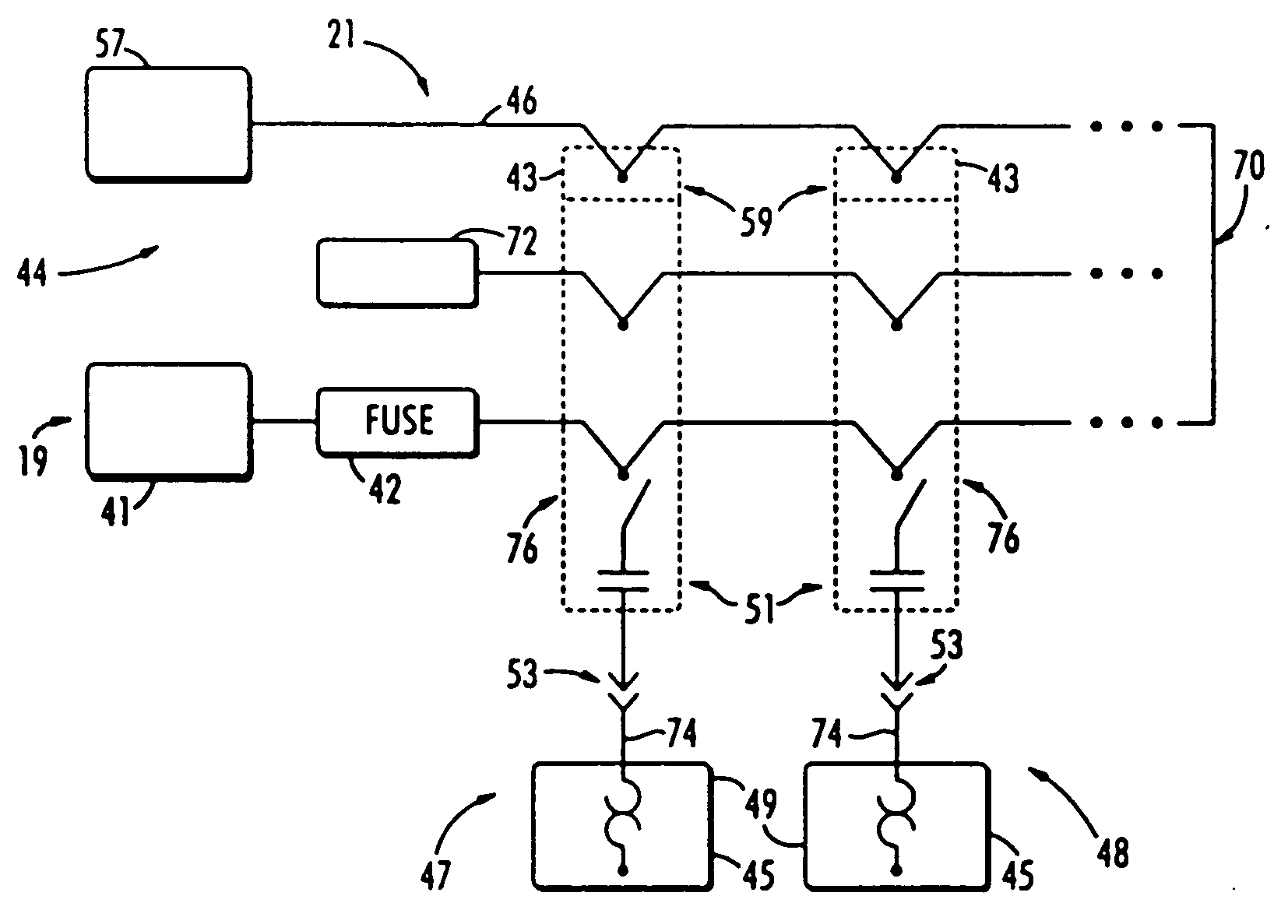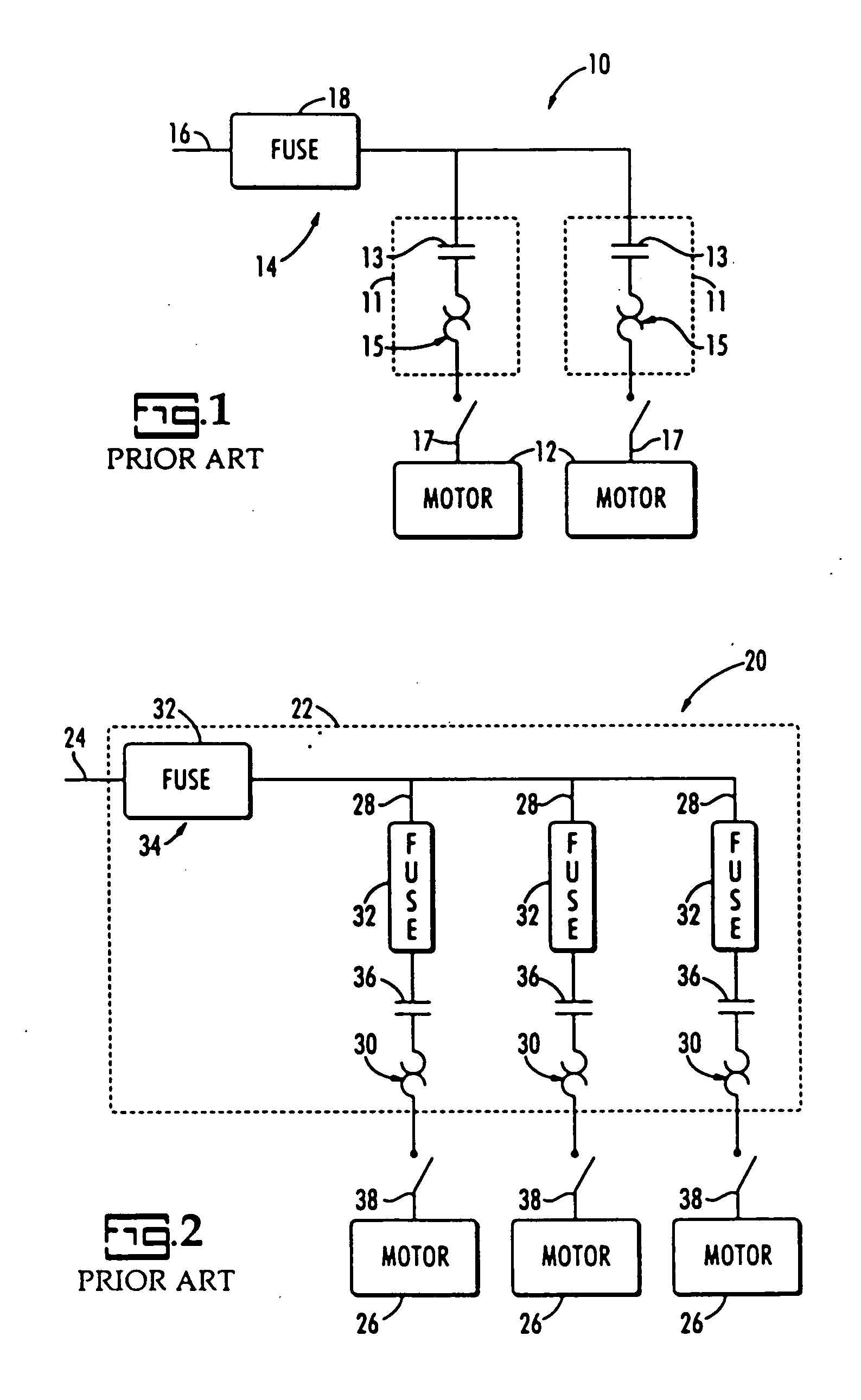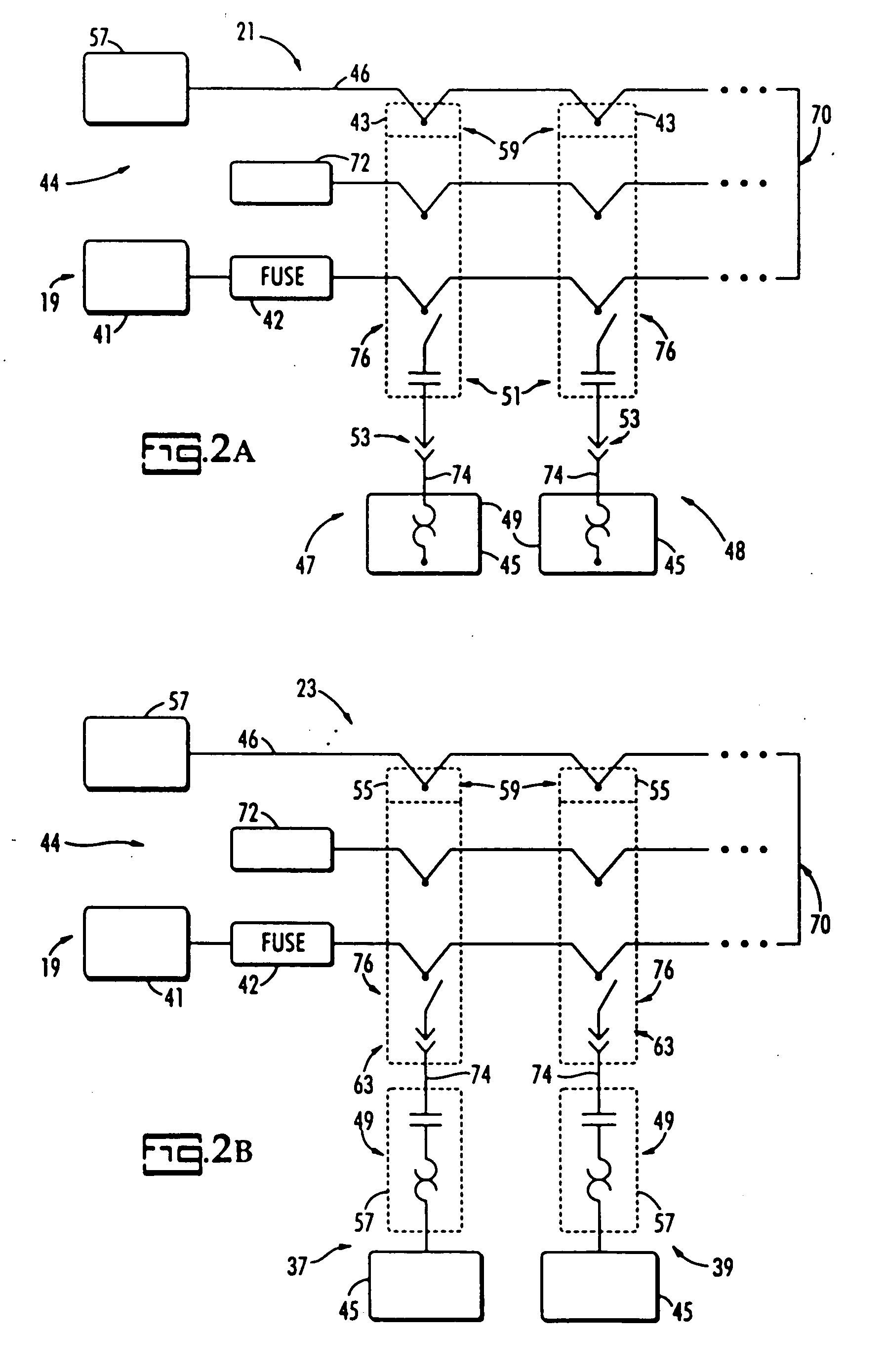Decentralized control of motors
- Summary
- Abstract
- Description
- Claims
- Application Information
AI Technical Summary
Benefits of technology
Problems solved by technology
Method used
Image
Examples
example 1
[0044]FIG. 3 is a perspective schematic view of an application of the decentralized control system in accordance with one embodiment of the present invention. Cement bags 50 are transported from one location to another by a conveyor, shown generally at 52, having eight conveyor belts 54 successively placed in a row. Each of the conveyor belts 54 has a power demand of about 0.75 kW and is desired to have a variable speed of from 50% to 100%. A sensor 56 is attached to each conveyor belt 54 to detect when a new cement bag arrives on each conveyor belt. It is desirable that each of the conveyor belts 54 is disconnectable from power supply for maintenance of the conveyor 52.
[0045] The equipment description for the conveyor 52 shows a power demand of 0.75 kW and a required speed setting range of 1:2. Eight geared motors 58, such as a MOVIMOT geared motor model type MM07 manufactured by SEW Eurodrive Company with a setting range of 1:5, are each used to drive a conveyor belt 54. For cont...
example 2
[0046]FIG. 4 is a perspective schematic view of an application of the decentralized control system in accordance with a second embodiment of the present invention. In a conveyor, shown generally at 70, used for transporting automobile tires 72, fifteen roller conveyors 74 are each successively placed in a row. Each of the roller conveyors 74 has a power consumption of 0.55 kW, and the speed of the conveyor is desired to be between 33% and 100% via InterBus. A first sensor 76 is located at the front of each roller conveyor 74 to detect the transfer of a tire 72 from the previous roller conveyor. A second sensor 78 is located at the end of each roller conveyor 74 to detect the transfer of the tire to the following roller conveyor. Each roller conveyor 74 is powered only if a tire 72 is located on the conveyor 70. A control light 80 located directly at each roller conveyor 74 indicates the activation of the roller conveyor 74. For maintenance work, the roller conveyors must individuall...
example 3
[0049]FIG. 5 is a perspective schematic view of an application of the decentralized control system in accordance with a second embodiment of the present invention. In a conveyor, shown generally at 90, for transporting automobile tires 92 two roller conveyors 94, 96 used for tire transport are located in a cell together with a robot arm 98, collectively referred to as a robot cell. The robot arm 98 picks up the tires from one of the roller conveyors 96 and mounts each tire 92 onto a wheel rim. Each of the roller conveyors 94, 96 has a power demand of 0.55 kW. Positioning the tires 92 on a roller conveyor 94 is controlled by means of six sensors 100. Brake motors with a speed setting range of 10:1 are to be used for the positioning task. The control in the robot cell is carried out via a DeviceNet interface, which will also be used to control the two roller conveyors 94, 96 of the robot cell. A switch cabinet of the robot cell does not have sufficient space to contain inverters of bo...
PUM
 Login to View More
Login to View More Abstract
Description
Claims
Application Information
 Login to View More
Login to View More - R&D
- Intellectual Property
- Life Sciences
- Materials
- Tech Scout
- Unparalleled Data Quality
- Higher Quality Content
- 60% Fewer Hallucinations
Browse by: Latest US Patents, China's latest patents, Technical Efficacy Thesaurus, Application Domain, Technology Topic, Popular Technical Reports.
© 2025 PatSnap. All rights reserved.Legal|Privacy policy|Modern Slavery Act Transparency Statement|Sitemap|About US| Contact US: help@patsnap.com



